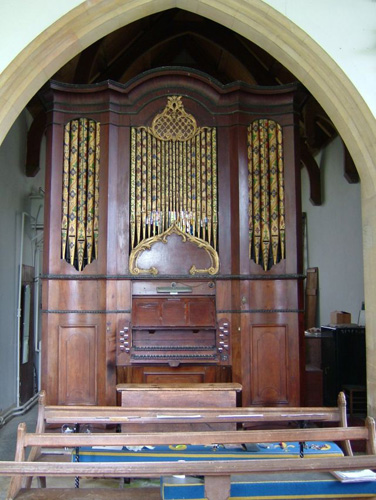 |
Hillington (Norfolk), St Mary the Virgin

Johannes Snetzler 1756
Built for the “Music Gallery” of the Duke of Bedford; later transfered to Christ Church, Westminster, afterwards to the National Society Training School, finally to Hillington in 1857 by G. M. Holdich; restored by Boggis in 1956.
Snetzler's organ, today in Hillington, Co. Norfolk, represents an almost typical migration history not uncommon with English organs. Only organs of a peculiar quality could withstand something like being transfered to four different places within a century with all the necessary adaptions to a new room without major damages.
Snetzler's instrument is a typical example of a mid-18th century organ type becoming popular for noble manors for concert use, the type of instrument for Handel's organ concerts.For such purposes a two manual instrument with or without a pedal supplement was considered perfectly satisfactory. The economical construction allowed careful and precise work supporting the longevity of those instruments.
Specification
Manuals G’-e3; pedal C-f1
Great:
Open Diapason 8’
Chimney Flute 8’ (G’-f#0 stopped)
Principal 4’
Twelfth 22/3’
Fifteenth 2’
Sesquialtera 3f.
(vacat)
Choir (Pos)
Stopt Diapason 8’ (B+D)
Gamba 8’ (from g0)
Dulciana 8’ (from g0)
Flute 4’ (B+D)
P:
Bourdon 16’
Q: http://npor.emma.cam.ac.uk/cgi-bin/Rsearch.cgi?Fn=Rsearch&rec_index=N06361
© Greifenberger Institut für Musikinstrumentenkunde | info@greifenberger-institut.de



